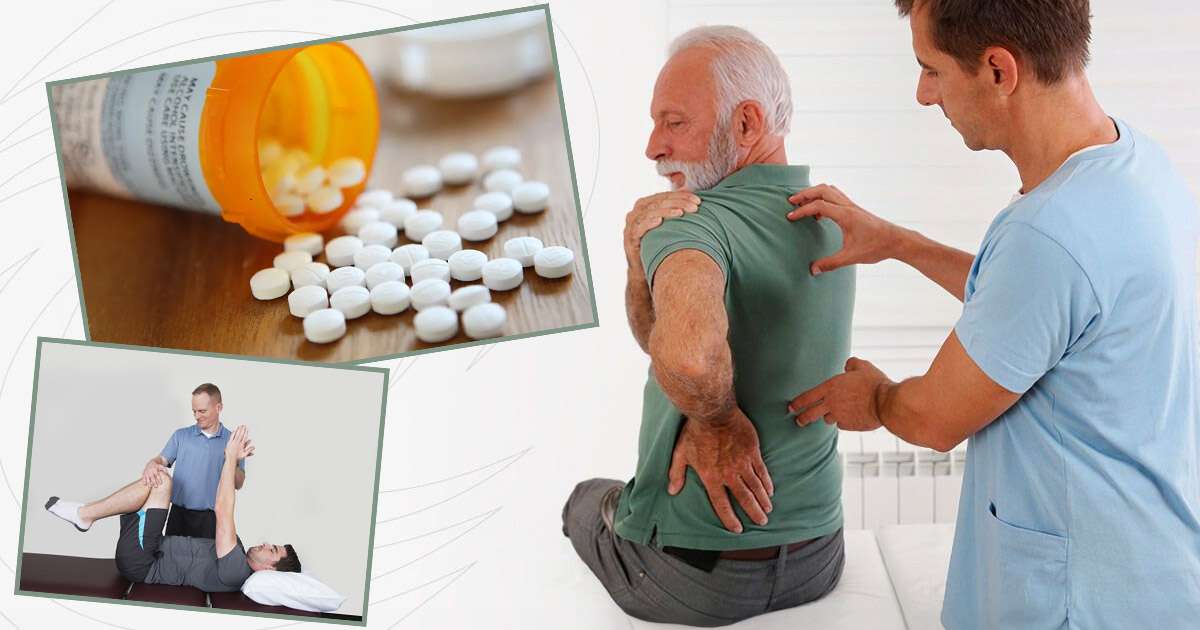Pain Relief for Spinal Stenosis: Medications, Treatments & Finding What Works

Spinal stenosis occurs when the spaces within your spine become narrower, putting pressure on the nerves that run through it. This can lead to symptoms like pain, numbness, weakness, and discomfort in your back, neck, and limbs. A study indicates that 5 out of 1000 people over the age of 50 are likely to develop spinal stenosis, underscoring its significant prevalence and the importance of effective management strategies. Often triggered by factors such as aging, arthritis, slipped discs, or thickened ligaments, spinal stenosis can greatly impact your health and daily activities, making routine tasks difficult and limiting movement, ultimately lowering your quality of life.
Understanding the Pain of Spinal Stenosis
Spinal stenosis is painful because the spaces in the spine get smaller, squeezing the nerves. This pressure can cause different types of pain, like a dull ache, sharp pains, or discomfort that spreads to your back, neck, and limbs. Sometimes, it can feel like tingling or weakness, making daily tasks difficult. For some people, the pain is so severe that it limits their movement and affects their everyday life.
It’s important to manage this pain to stop it from getting worse. There are several ways to treat it, such as physical therapy to boost strength and flexibility, nonsteroidal anti-inflammatory drugs (NSAIDs) to reduce swelling, and corticosteroid injections for more intense pain.
These treatments aim to ease the pressure on nerves and reduce swelling, helping to relieve pain and improve life quality. Managing pain early and effectively helps keep the symptoms from getting worse, allowing people to go about their daily activities. Working with healthcare providers is key to finding the right treatment plan for each person, ensuring better pain control and spinal health.
Managing Severe Spinal Stenosis Pain: The Role of Painkillers
When dealing with spinal stenosis, painkillers are usually the first step to ease the pain. Doctors often suggest common over-the-counter options like acetaminophen and NSAIDs, such as ibuprofen, to help reduce pain and swelling. These medications can make it easier to handle daily tasks with less discomfort. Besides painkillers, there are other medicines that can help too. Muscle relaxers can relieve tight muscles, and medications for nerve pain can specifically target nerve-related issues. Together, these treatments are important for helping you move more easily and feel better overall.
- Painkillers: If the pain is more severe, doctors might prescribe stronger medicines like opioids. However, these should be used carefully due to the risk of side effects and addiction.
- Muscle Relaxers: Medicines like cyclobenzaprine or baclofen are used to calm muscle spasms that can occur with spinal stenosis. They work by easing muscle tension, which can reduce pain and make movement easier.
- Nerve Pain Medications: Drugs such as gabapentin and pregabalin are aimed at nerve-related pain. They change how nerves send pain messages to the brain, which helps lower pain sensations.
- Corticosteroid Injections: These injections are given directly where it hurts to quickly lessen swelling and pain. Although the relief might not last forever, it can help you start physical therapy and other activities to improve your condition.
- Alternative Therapies: Other options like acupuncture, massage, and chiropractic care can also help by relaxing muscles and relieving tension. Using heat or cold packs at home can further reduce pain and swelling.
Each treatment works in its own way, so it’s important to talk to healthcare providers to create a plan that fits your needs. This personalized strategy can help keep symptoms in check, making daily activities manageable and improving overall well-being.
Comprehensive Treatment for Spinal Stenosis
To achieve full health with spinal stenosis, it’s important to use a mix of treatments and lifestyle changes. Here’s how different parts of the treatment work together to improve your condition:
- Medical Treatments: Managing spinal stenosis often starts with medications. Over-the-counter pain relievers and anti-inflammatory drugs can help with mild pain. For more serious cases, doctors might prescribe stronger medications or give corticosteroid shots to reduce swelling and ease nerve pain. These treatments help you feel better and stay active.
- Physical Therapy: Physical therapy is crucial for building strength and flexibility. Therapists can teach exercises that support your spine and take pressure off the nerves. This can make moving easier and reduce symptoms over time.
- Lifestyle Changes: Adopting healthy habits can make a big difference. Keeping a healthy weight lessens the load on your spine, and doing gentle exercises like walking or swimming keeps your body active without overdoing it. Also, adjusting your daily routine to maintain good posture and spine alignment can be very helpful.
- Rehabilitation Strategies: If symptoms are severe, you might need more in-depth rehabilitation or even surgery. Rehabilitation can include physical, occupational, and sometimes mental health therapies to help you regain function and improve overall health.
- Mind-Body Techniques: Practices like yoga, meditation, or tai chi can help reduce stress and manage pain. These techniques not only relax the body but also help you handle chronic pain better.
By combining these treatments, you can manage spinal stenosis symptoms and work towards better overall health and well-being. It’s important to work with healthcare providers to create a plan that fits your specific needs.
Spinal Stenosis Relief: Achieving a Better Quality of Life
To find relief from spinal stenosis, it’s important to use a mix of treatments and lifestyle changes. Combining medical treatments, like medications and physical therapy, with mind-body techniques can help you manage pain and move more easily. Keeping up with gentle exercises and good posture is also key to maintaining a healthy spine. If your symptoms are severe, rehabilitation or surgery might be needed to see big improvements. Always talk to healthcare professionals to create a treatment plan that fits your needs. With the right approach, spinal stenosis doesn’t have to hold you back, and you can aim for a healthier, more active life.

